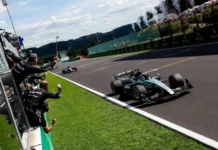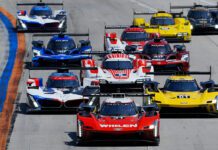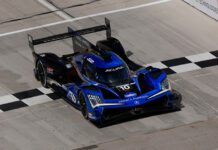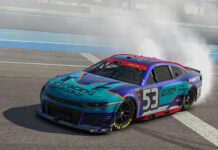Event procedures for the debut of IZOD IndyCar Series doubleheader weekends at Belle Isle, Toronto and Houston in 2013 have been formalized.
“Doubleheaders are something we wanted to introduce this year to improve the fan experience on a given race weekend. With two races, there certainly is a lot more for the fans to experience,” IZOD IndyCar Series Race Director Beaux Barfield said. “We took that one step further and decided to introduce some of other activities for our race programs that we’ve been considering for the past few years.”
Qualifications for the first race of the doubleheader weekend will take place on Friday and follow the format of three rounds of eliminations, culminating in the Firestone Fast Six. The first segment has been reduced from 15 minutes to 10 minutes to match subsequent segments.
Firestone tire usage during the three segments of all road/street qualifying will be determined by the entrant. In 2012, one set of tires was allowed during each of the three segments. The change further opens up strategy, allowing teams the choice of saving a new set of tires for the race or use during qualifying.
Qualifications for the second race will be held on Saturday morning and consist of a 30-minute session for all cars, with the starting order set by lap time.
Standing starts will be implemented for Race 1 at both Toronto in July and Houston in October. Race 2 at the venues will have a traditional North American rolling start following a few pace laps.
“We are currently investigating adding a standing start to another race or two this season,” said Barfield, who noted one won’t be at Belle Isle based on examining the recent reconfiguration of a section of the street circuit. Both races at Belle Isle will have rolling starts.
For races featuring standing starts, cars will be staged on the street courses with the start controlled by a trackside lighting system.
“The lighting system is all FIA spec in terms of how the light sequence and the process works,” Barfield said. “Once the cars are in their grid spots following formation laps, the five lights will come on one second apart. Once all five lights have lit up, between .5 of a second and 1.5 seconds all the lights will go out, which signifies the start of the race.”
The lighting system will be available for driver practice at the venues.
“We would leave the lighting system at pit out and designate a pit stall where drivers can stage themselves and practice standing start launches during official practice sessions,” Barfield said. “It’s a way for drivers to practice their own launches and get used to the lighting system.”
An in-car lighting system was eschewed because of inherent problems associated with two-way radios. Trackside lighting requires “one point of communication from Race Control to the base of the lights and the light system,” according to Barfield.
“We have access to a two-way transponder system that makes it straightforward and simple on how to police jump-starts,” he said.
Both races at each of the three doubleheader venues will be full distance with equal points. Pit location for both races of a doubleheader weekend will be determined by the entrant’s qualifications result at the previous race event. Qualifications for Race 2 will determine pit location for the next event.
“Since we acquired the race in 2008, our mandate has been to create entertainment and excitement for fans, customers, sponsors, tourism and the local community,” said Charlie Johnstone, president of the Honda Indy Toronto, which will be contested July 13-14.
“A doubleheader allows us to go further, faster in the delivery of our mission and offers numerous benefits. We’re extremely excited to make it happen.”
Indy car racing returns Oct. 5-6 to Houston for the first time since 2007 on a circuit around Reliant Park. (IndyCar)

















































